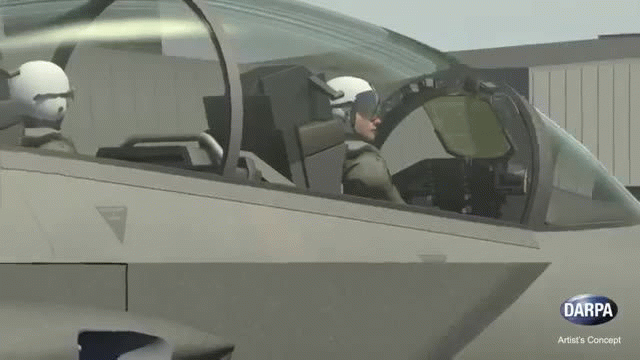Copy the embed code below and paste it to your site or blog.
Category:
Description:
Witout rocket but with powerful US F-15 jet Plane.
Airborne Launch Assist Space Access, or DARPA ALASA, a current program of the US defense technology agency DARPA "designed to produce a rocket capable of launching a 100-pound satellite into low Earth orbit for less than $1 million." The program was conceived, then announced in 2011, and funded development work began in 2012.
Credit video1: Darpa
Traditional launch methods of satellites are too costly to put small payloads into orbit without a larger payload accompanying it to make the launch worth the expense. Current launches of sub-100-pound satellites are performed as "piggyback payloads" on launches of much larger spacecraft, usually headed for geostationary orbit, and are released at the altitude of the primary payload. In addition, range costs of operating from ground-based infrastructure have escalated as they have aged, accounting for up to 35 percent of the launch cost. This restricts the number of light satellite launches to 10-12 per year, which could be increased if small payloads could be launched into space affordably and without ground range constraints. Air-launching satellites was first seriously considered during the 1950s and 1960s, but small payloads in the 100-pound class at the time did not have effective capabilities, so the method was overlooked. The first air-launched rocket to put a satellite into orbit was the Orbital Sciences Corporation Pegasus on 13 June 1990, but it was deployed from a heavily modified and expensive Lockheed L-1011 airliner. The ALASA program's objective is to use an unmodified aircraft platform (except for software) that does not have to be dedicated to the mission to place a 100 lb satellite into orbit that requires only 24 hours notice to integrate and launch the payload, with the ability to re-plan the launch in flight and relocate the aircraft to any civilian airport or military airfield in a crisis situation, while using onboard GPS/inertial position reporting rather than ground-based radar tracking.
In the first phase, Boeing, Lockheed Martin and Virgin Galactic were funded to explore different Alasa system concepts while Northrop Grumman, Space Information Laboratories and Ventions were contracted to work on enabling technologies that could be used by any or all of the system teams.
In December 2012, DARPA announced that the ALASA program would provide the launch vehicle booster for another DARPA program that is intending to release a "constellation of 24 micro-satellites (~20 kilograms (44 lb) range) each with 1-meter imaging resolution."
In May 2013, DARPA requested US$40 million for a second year of ALASA program funding in spring 2013.
 ENGLISH
ENGLISH SPANISH
SPANISH FRENCH
FRENCH ITALIAN
ITALIAN HINDI
HINDI CHINESE
CHINESE JAPANESE
JAPANESE ARABIC
ARABIC PORTUGESE
PORTUGESE GERMAN
GERMAN RUSSIAN
RUSSIAN



 Subscribe
Subscribe





